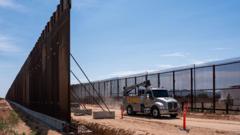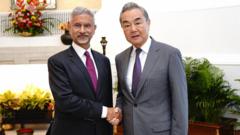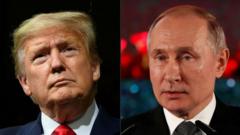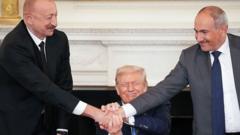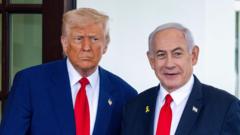As President Trump boasts about over $12 trillion in business investments during his administration, analysis shows that this figure may be exaggerated and that the actual economic impact has been more modest. Experts emphasize the need for caution and highlight the ongoing uncertainty affecting real investment growth.
Analyzing Trump's Bold Claims on Business Investment: Reality vs. Rhetoric
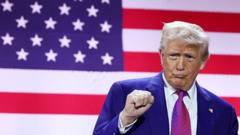
Analyzing Trump's Bold Claims on Business Investment: Reality vs. Rhetoric
A closer examination of President Trump’s investment figures reveals discrepancies and challenges the narrative of unprecedented growth during his tenure.
The reality of President Donald Trump’s claims regarding business investments has come under scrutiny as he cites an astonishing figure of over $12 trillion in investments that he claims has been "practically committed" since he took office. Trump attributes this impressive number to his administration's agenda of tariffs, tax cuts, and deregulation, but experts and analysts suggest the situation may not be as rosy as it seems.
The timeline of investment statistics shows a significant increase from January to March, which reflects only a small portion of Trump’s tenure and was partly affected by an earlier Boeing strike, raising questions about the validity of such a spike. The lack of comprehensive data at this early stage complicates the assessment of the economic landscape.
Nick Bloom, a Stanford University economist, contends that while investment is experiencing a slight increase, it may actually be down due to the high levels of uncertainty in the market. He notes that the sentiment among investors suggests a cautious approach rather than a robust surge attributed solely to Trump’s policies.
Notably, some of the major investment pledges made by companies like Roche, which announced a $50 billion investment plan, consisted of projects that were already in progress prior to Trump’s presidency. Furthermore, many high-profile investment announcements cited by Trump were merely affirmations of previously laid plans, thus undermining the impact of his economic policies.
The White House has been citing a total of approximately $5.3 trillion in new investments as evidence of economic revitalization under Trump, yet analysts argue that much of this figure is inflated. Items included in this tally often do not constitute genuine investments; for instance, Apple’s $500 billion spending commitment accounts for taxes and existing employment costs, rather than new capital investment.
Goldman Sachs has quantified the actual new investment arising from these announced commitments to be a significantly lower figure, around $134 billion, and that could shrink even further when accounting for risks associated with potential project failures.
The White House has dismissed accusations of exaggeration, arguing that its varied approach is fostering investment. The responses from numerous companies on the White House’s investment list often revealed that several of their projects predated the current administration, casting doubt on Trump's assertions.
Moreover, policy shifts enacted by the Trump administration could incentivize firms to inflate their investment promises to gain favorable conditions, as firms seek immediate benefits without the obligation to follow through later if circumstances change.
However, analysts acknowledge that Trump’s tariffs have nudged some pharmaceutical companies toward U.S. manufacturing, a trend that is nonetheless constrained by long-term uncertainty regarding ongoing tariff and pricing policies.
Investment growth in the U.S. is anticipated to decelerate this year due to lingering policy uncertainties, with some economists arguing that Trump's strategy overlooks deeper issues such as industry consolidation that diminishes competitive pressures, further complicating the landscape for genuinely revitalizing U.S. investments.
In summary, while Trump’s ambitions to enhance investment in the U.S. may be commendable, the execution and metrics presented paint a picture that is more complex and less grandiose than portrayed.

